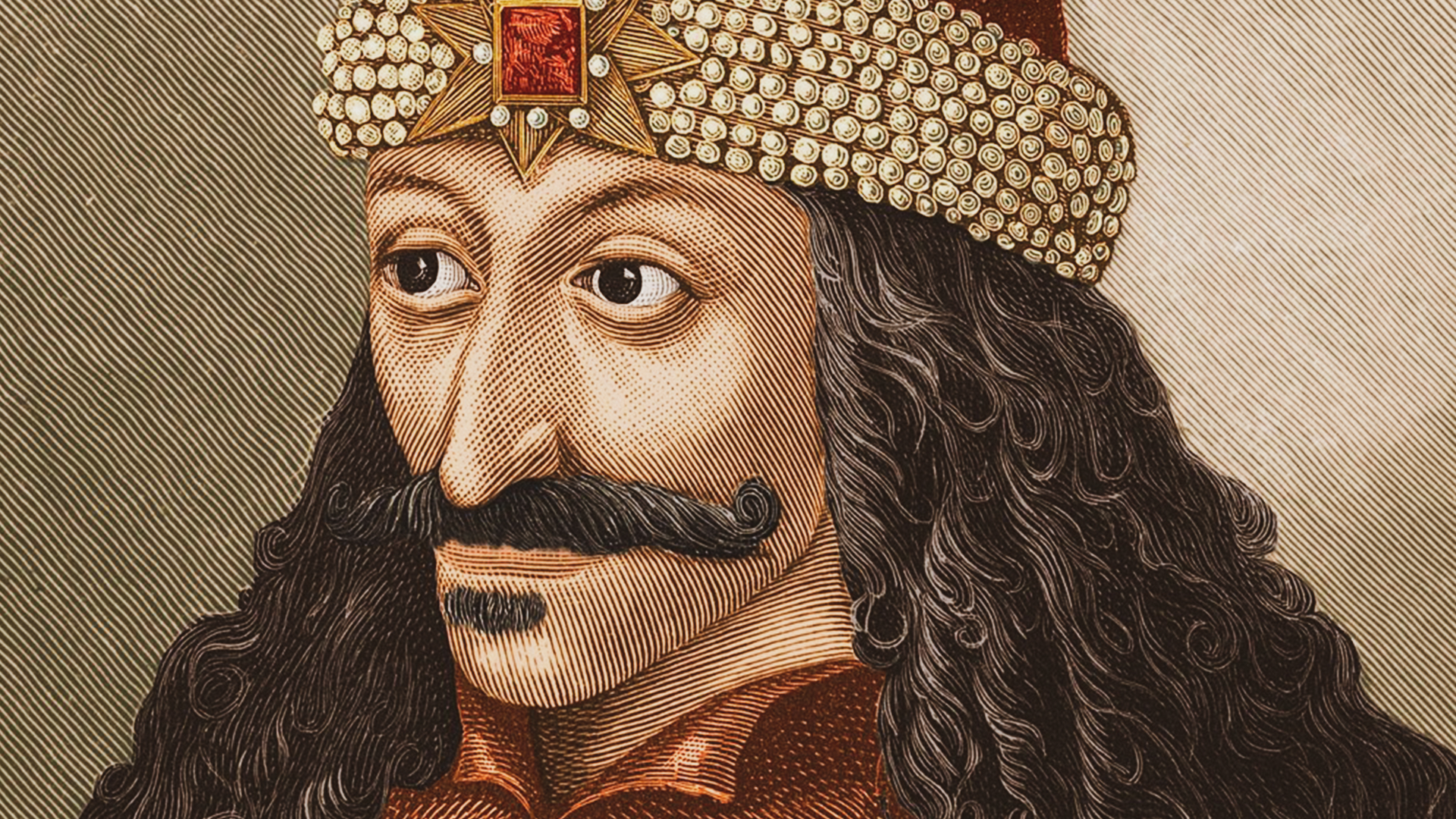
The Real Dracula
21.03.2022
Count Dracula, a fictional character in the Dracula novel, was inspired by one of the best-known figures of Romanian history, Vlad Dracula, nicknamed Vlad Tepes (Vlad the Impaler), who was the ruler of Walachia at various times from 1456-1462. Born in 1431 in Sighisoara, he resided all his adult life in Walachia, except for periods of imprisonment at Pest and Visegrad (in Hungary).
Vlad was the second of four brothers born into the noble family of Vlad II Dracul. His sobriquet Dracula (meaning “son of Dracul”) was derived from the Latin draco (“dragon”) after his father’s induction into the Order of the Dragon, created by Holy Roman Emperor Sigismund for the defense of Christian Europe against the Ottoman Empire. Vlad moved to Târgoviște, Walachia, in 1436 when his father assumed leadership of the Walachian voivodate (principality). In 1442 Vlad and his younger brother were sent to the court of Ottoman Sultan Murad II as collateral to assure the sultan that their father, in a reversal of his previous position, would support Ottoman policies. Vlad returned in 1448, having been informed of the assassination of his father and elder brother at the hands of Walachian boyars (nobles) the year before.
Vlad embarked on a campaign to regain his father’s seat from the new ruler, Vladislav II. His first attempt at the throne relied on the military support of the Ottoman governors of the cities along the Danube River in northern Bulgaria, according to Curta. Vlad also took advantage of the fact that Vladislav was absent at the time, having gone to the Balkans to fight the Ottomans for the governor of Hungary at the time, John Hunyadi.
Vlad won back his father’s seat, but his time as ruler of Wallachia was short-lived. He was deposed after only two months, when Vladislav II returned and took back the throne of Wallachia with the assistance of Hunyadi.
After an eight-year struggle, Vlad again claimed the voivodate.
It was during this period of rule that he committed the atrocities for which he was best known. His penchant for impaling his enemies on stakes in the ground and leaving them to die earned him the name Vlad the Impaler. He inflicted this type of torture on foreign and domestic enemies alike: notably, as he retreated from a battle in 1462, he left a field filled with thousands of impaled victims as a deterrent to pursuing Ottoman forces. That year he escaped Ottoman capture only to be intercepted by Hungarian forces and imprisoned by Matthias I of Hungary, whose assistance he had sought. Vlad regained his seat in 1476 but was killed in battle the same year. He remained a folk hero in the region for his efforts against Ottoman encroachment.

